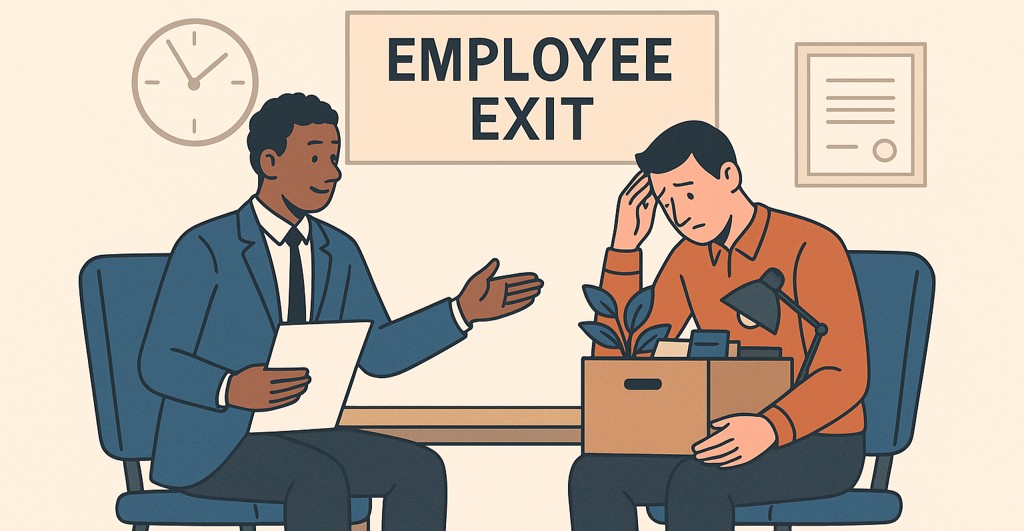Introduction
Employee exits—whether planned or sudden—are inevitable in any engineering team. But as an Engineering Leader, how you handle them sets the tone for your leadership and organizational culture. A graceful and ethical offboarding process can protect your team’s morale, uphold company values, and even leave the door open for future collaboration.
In this post, we’ll walk through actionable steps for managing employee exits responsibly, with a focus on both standard practices and exceptional but practical scenarios.
1. Communicate with Transparency and Empathy
The first principle is simple: honesty with dignity.
- Hold a private 1:1 conversation to inform or accept the decision.
- Stay emotionally neutral—no guilt-tripping, over-convincing, or shaming.
- Appreciate their contributions upfront, even if the exit is not ideal.
Pro Tip: If the resignation is due to burnout or personal reasons, offer flexible options such as unpaid leave or a gradual handover instead of rushing the exit.
2. Ensure Smooth Knowledge Transfer
You must protect continuity for the team and business.
- Assign a KT (knowledge transfer) buddy.
- Record handover sessions via screen-share tools.
- Ensure documentation is updated (Confluence, Git repos, etc.)
Edge Case: If the employee is disengaged or hostile, shift focus to access recovery (accounts, credentials, repo ownership), and monitor Git/commit activity for gaps.
3. Communicate Internally with Clarity
An exit announcement should be honest, brief, and tactful.
- To the team: “X will be moving on. We appreciate their contributions. Here’s how we’re handling handovers.”
- To stakeholders: Reassure them about stability and next steps.
Edge Case: If performance or ethical issues triggered the exit and others are aware, frame the departure as a reinforcement of the team’s standards, not punishment.
4. Celebrate Contributions (When Appropriate)
A little appreciation goes a long way in shaping workplace culture.
- Share a farewell note or allow them to write one.
- Host a short send-off call or team lunch.
- If they’re not comfortable, respect that too.
Exception: For toxic or contentious exits, skip the celebration. Stay neutral and move forward with minimal disruption.
5. Follow a Strong Offboarding Checklist
A secure and smooth exit avoids future surprises.
Offboarding Essentials:
- Revoke access (GitHub, Slack, CI/CD, VPN, servers)
- Return company hardware
- Finalize HR paperwork
- Provide relieving letter and final payslip
Real-World Note: For “silent leavers” or ghosting cases, escalate early to HR/legal, document your outreach, and follow standard termination protocols.
6. Conduct an Exit Interview
Exit feedback is gold—don’t miss the chance to learn.
- Keep it informal and safe for open sharing.
- Avoid being defensive—just listen.
- Look for patterns if multiple exits cite similar issues (e.g., poor management, overwork, no career growth).
Insider Tip: If a top performer is leaving for a competitor, probe gently—“Is there anything we could have done differently to retain you?”
7. Keep the Door Open
Don’t burn bridges. Some of your best future hires might be former team members.
- Thank them publicly (if appropriate).
- Offer LinkedIn recommendations or endorsements.
- Maintain the relationship. You never know who’s coming back.
Edge Case: If they’re joining a direct competitor, maintain courtesy, but ensure NDA/IP agreements are respected. Involve HR/legal as needed.
Conclusion
Employee exits are more than just paperwork—they’re moments of leadership. As an Engineering Leader your ability to manage them ethically, strategically, and humanely sets the standard for your team.
Done right, even a tough goodbye can become a respectful transition—and in some cases, a future hello.

Be First to Comment